Cary, NC Pollen and Allergy Report for Summer 2023
Pollen Allergy Trends in Cary, NC
When is pollen lowest in Cary, NC?

February
Lowest month total PPM
Avg. PPM
When is pollen highest in Cary, NC?

April
Highest month total PPM
Avg. PPM
How does pollen in Cary, NC compare to North Carolina?
Cary has a lower average PPM than the state of North Carolina.
Cary yearly avg PPM:
North Carolina yearly avg PPM:
How does pollen in Cary, NC compare to the USA?
Cary has a higher average PPM than the USA.
Cary yearly avg PPM:
USA yearly avg PPM:
Is pollen worse this year in Cary, NC?
Spring 2023 was about the same as 2022.
Spring 2023 PPM:
Spring 2022 PPM:
Average PPM in Cary, NC
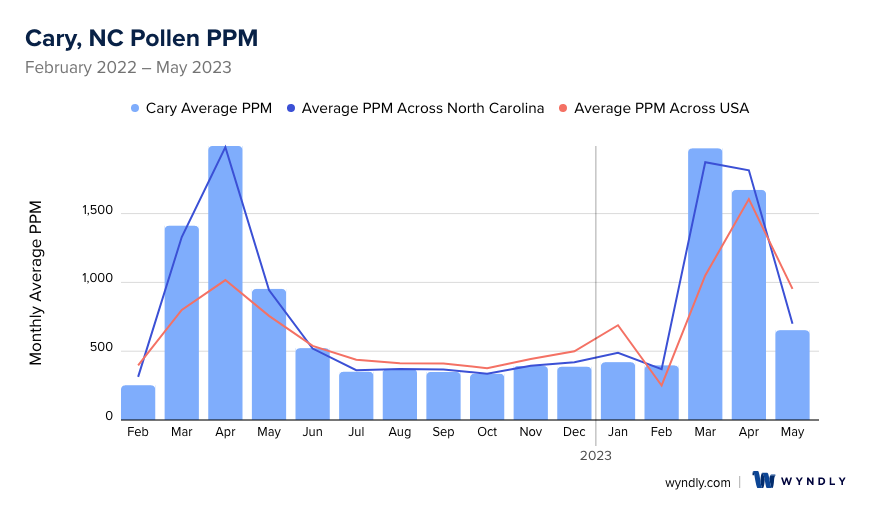
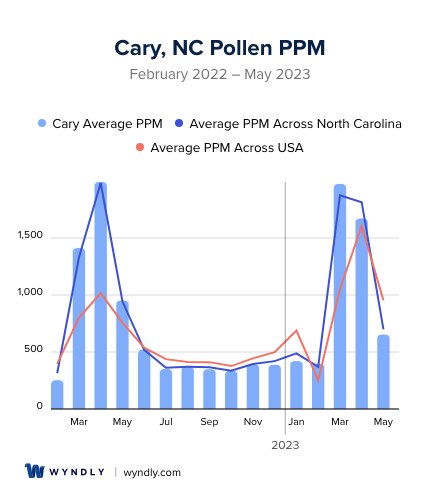
Cary, NC Pollen and Allergy Breakdown by Month
Grass
When is grass pollen highest in Cary, NC?
April has the highest grass pollen in Cary, NC with an average PPM of
When is grass pollen lowest in Cary, NC?
December has the lowest grass pollen in Cary, NC with an average PPM of
Tree
When is tree pollen highest in Cary, NC?
March has the highest tree pollen in Cary, NC with an average PPM of
When is tree pollen lowest in Cary, NC?
October has the lowest tree pollen in Cary, NC with an average PPM of
Weed
When is weed pollen highest in Cary, NC?
April has the highest weed pollen in Cary, NC with an average PPM of
When is weed pollen lowest in Cary, NC?
February has the lowest weed pollen in Cary, NC with an average PPM of
Cary, NC Pollen Monthly Breakdown by Pollen Type
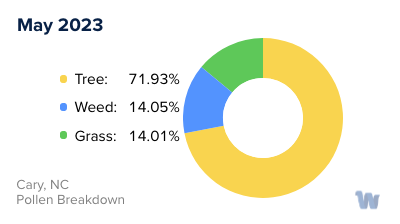
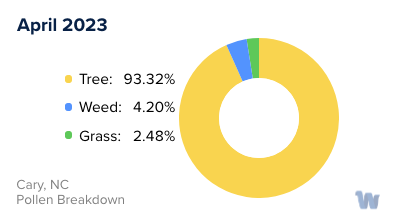
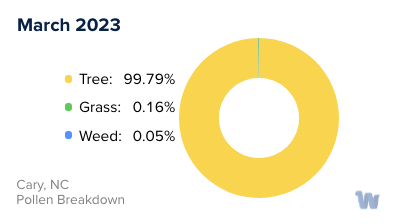
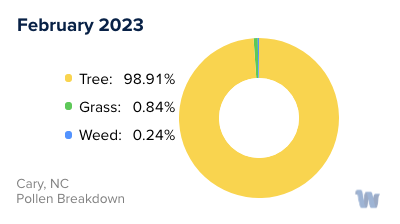
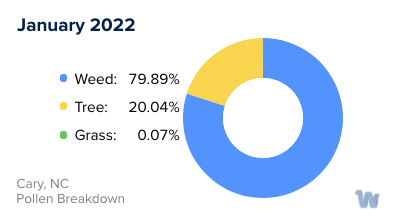
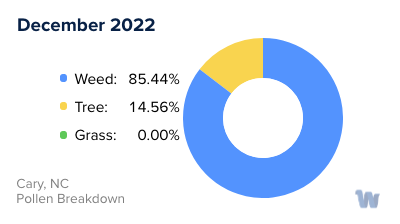
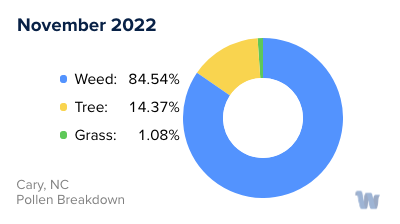
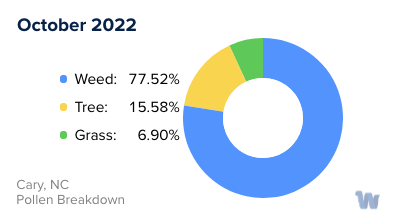
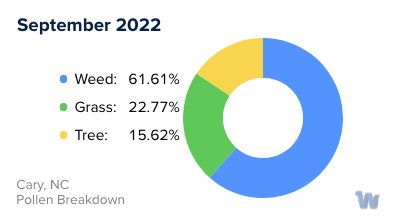
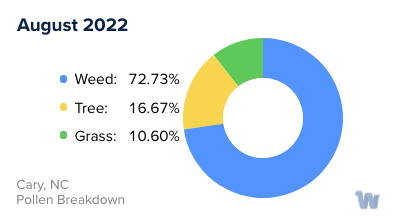
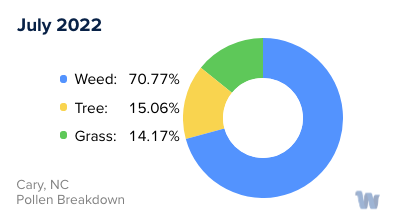
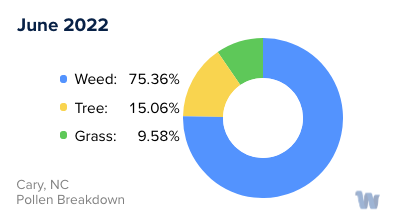
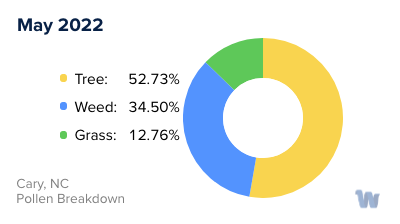
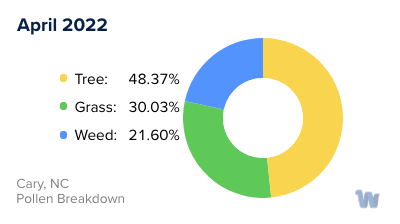
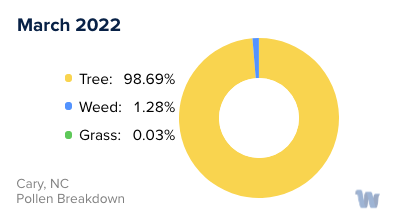
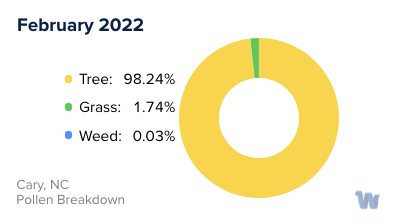
Pollen and Hay Fever in Cary, NC
For residents of Cary, North Carolina, pollen allergies and hay fever are a significant part of life, especially during the changing seasons. Pollen allergies, often responsible for hay fever symptoms, can flare up in the spring, summer, and fall, with seasonal allergies commonly beginning in late February or early March due to the milder winters. During these seasons, allergy sufferers may notice a heightened sensitivity to the pollen in the air.
Pollen in Cary comes from a variety of sources, with grasses, trees, and weeds being the primary producers. Depending on the season, different types of pollen become more prevalent. Tree pollen, for instance, is the main allergen in the spring. Residents may find themselves reacting to common trees such as river birch, hickory, oak, American beech, and yellow polar.
As the seasons shift into summer, grass pollen takes center stage. Allergy sufferers may find themselves reacting to grass types such as Bermuda grass, Zoysia grass, Ryegrass, and Fescue grass.
Then, as summer eases into fall, weed pollens become more prevalent, with ragweed being a common offender. This leads to a higher incidence of allergies from late summer up until the end of the allergy season.
During the peak allergy months of April, May, and September, the pollen count in the air can often reach high levels, adding to the discomfort of those with allergies. While the colder months of winter provide a respite from outdoor allergens, indoor allergens can still cause issues for many.
It's important to remember that the pollen count, a measure of the pollen density in the air, tracks all types of pollen. So even if the overall pollen count is low, specific types of pollen could still be high, causing discomfort for individuals who are particularly sensitive to those types.
In conclusion, understanding the types of pollen and the seasons in which they are prevalent can help residents of Cary, North Carolina, better anticipate and prepare for their allergies.


